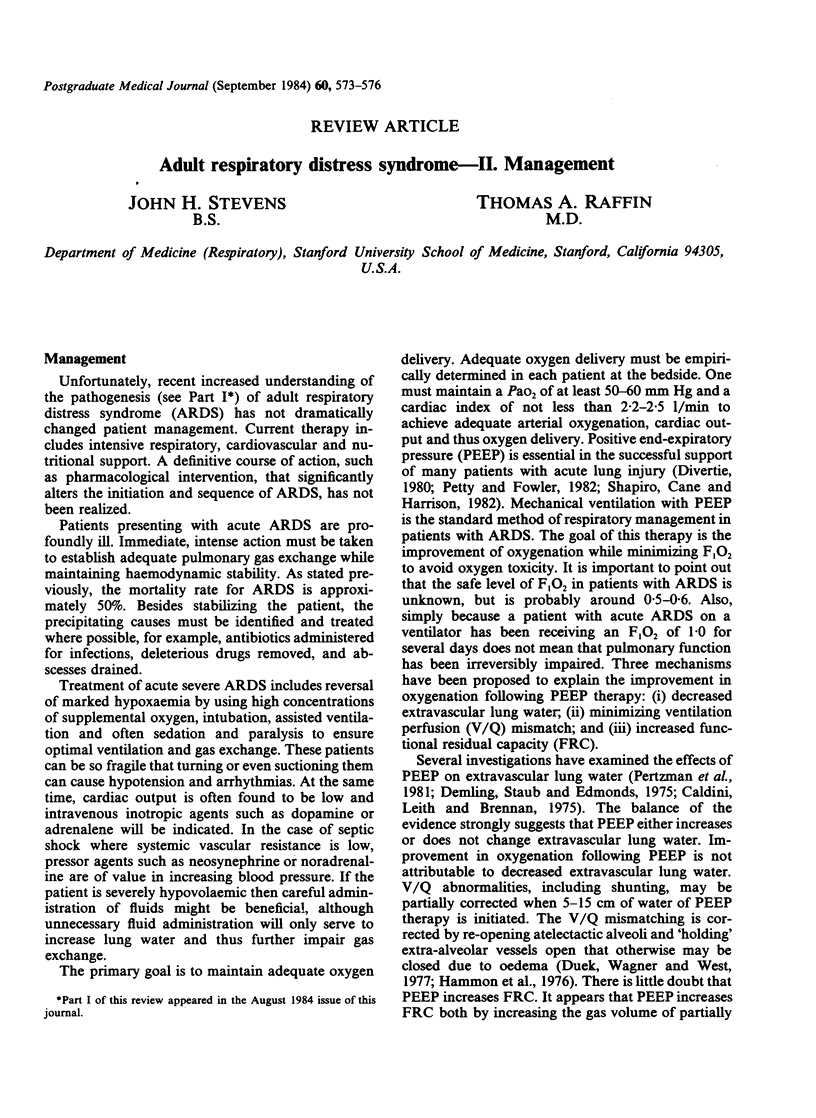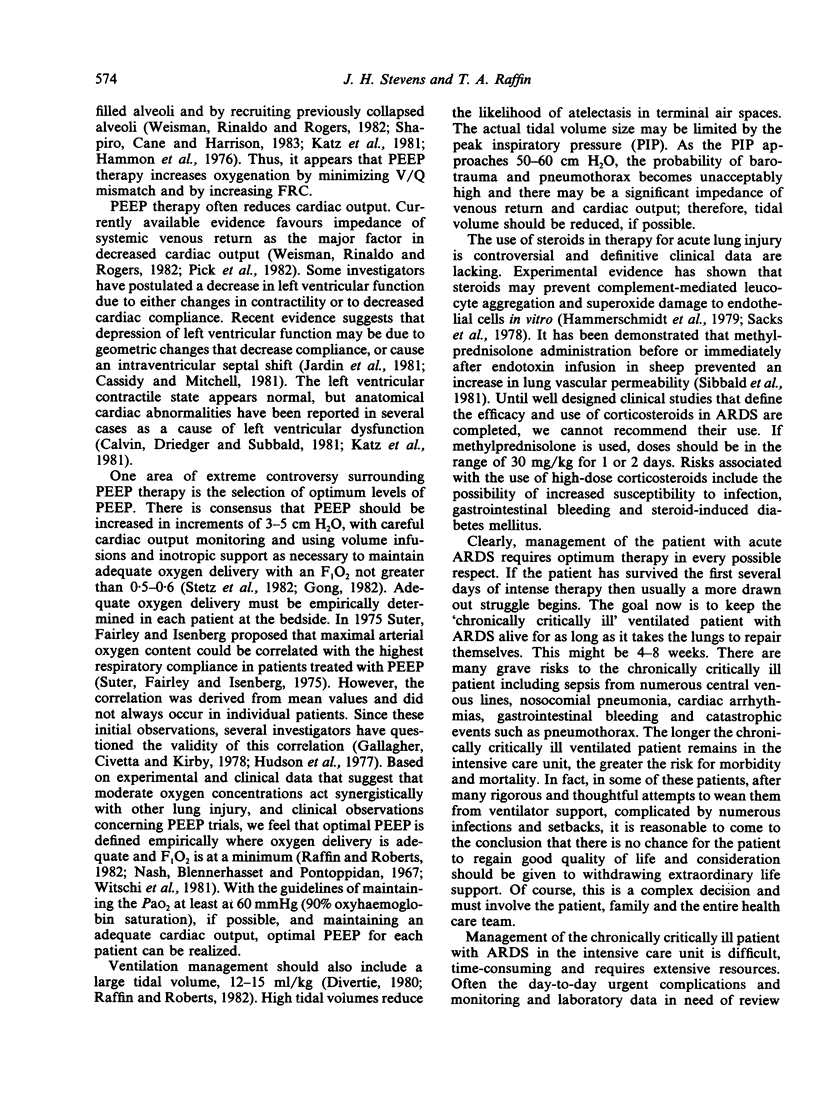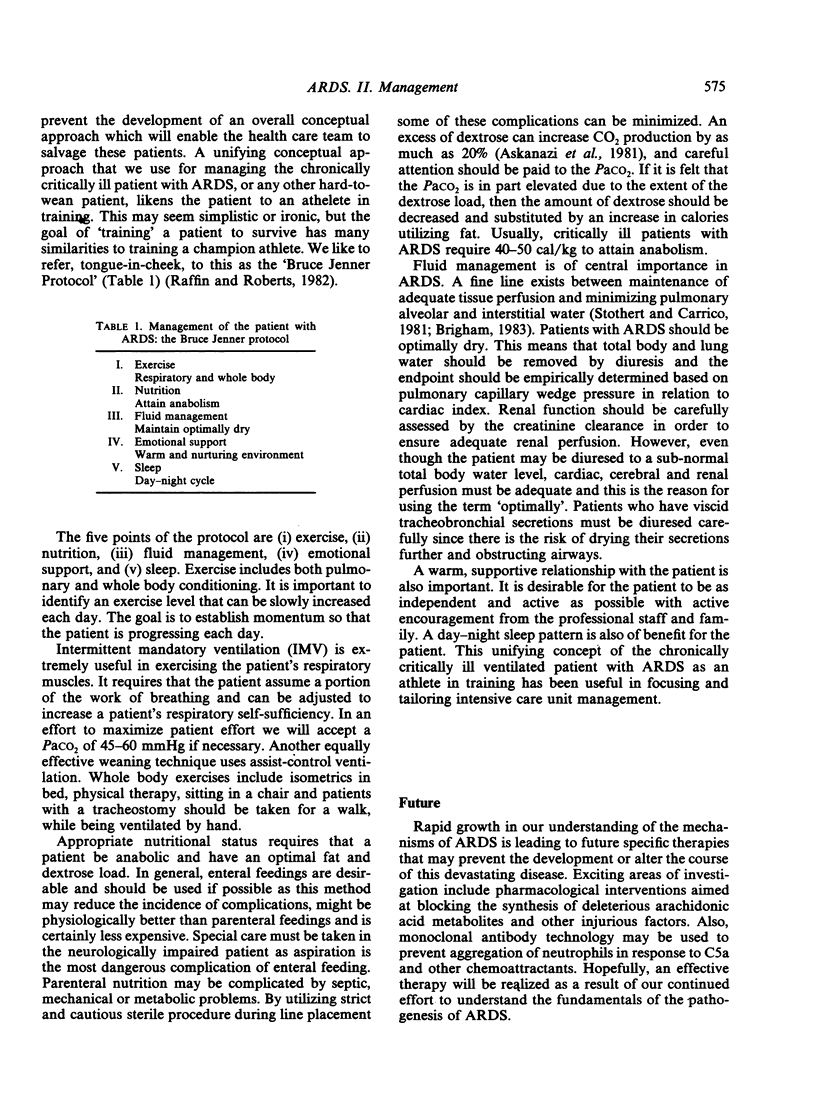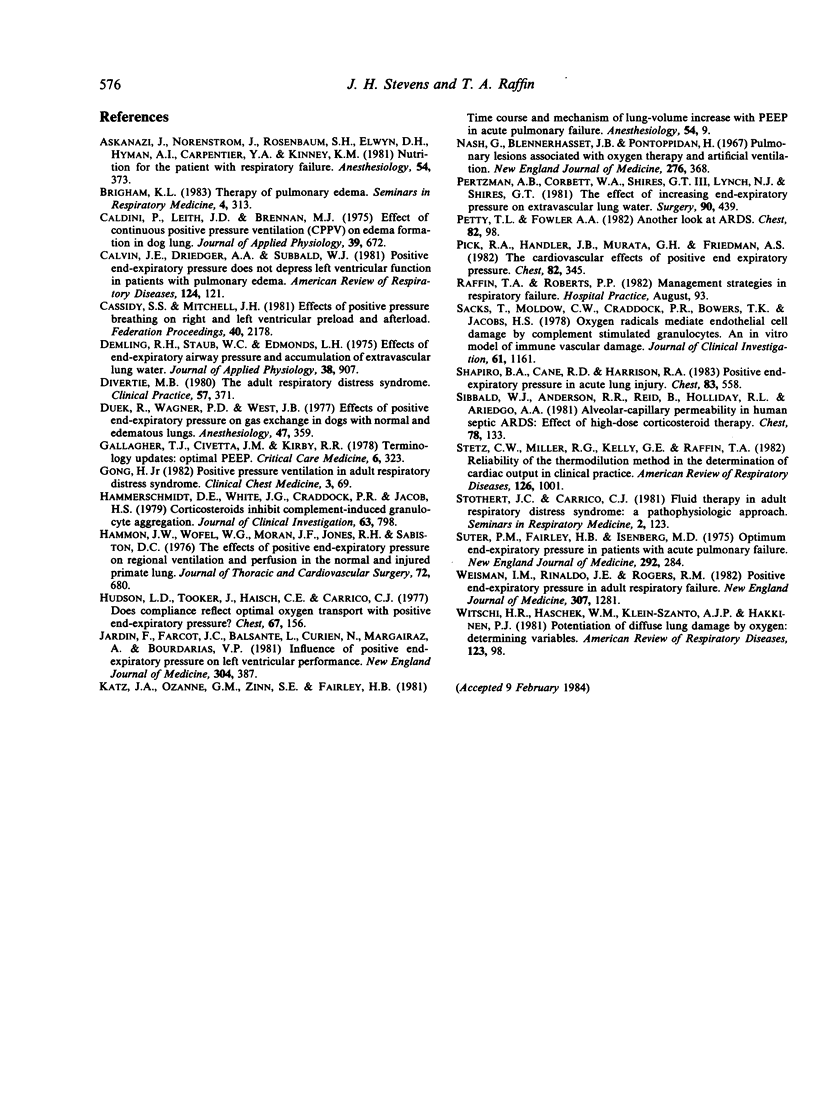Full text
PDF



Selected References
These references are in PubMed. This may not be the complete list of references from this article.
- Askanazi J., Nordenstrom J., Rosenbaum S. H., Elwyn D. H., Hyman A. I., Carpentier Y. A., Kinney J. M. Nutrition for the patient with respiratory failure: glucose vs. fat. Anesthesiology. 1981 May;54(5):373–377. doi: 10.1097/00000542-198105000-00005. [DOI] [PubMed] [Google Scholar]
- Caldini P., Leith J. D., Brennan M. J. Effect of continuous postive-pressure ventilation (CPPV) on edema formation in dog lung. J Appl Physiol. 1975 Oct;39(4):672–679. doi: 10.1152/jappl.1975.39.4.672. [DOI] [PubMed] [Google Scholar]
- Calvin J. E., Driedger A. A., Sibbald W. J. Positive end-expiratory pressure (PEEP) does not depress left ventricular function in patients with pulmonary edema. Am Rev Respir Dis. 1981 Aug;124(2):121–128. doi: 10.1164/arrd.1981.124.2.121. [DOI] [PubMed] [Google Scholar]
- Cassidy S. S., Mitchell J. H. Effects of positive pressure breathing on right and left ventricular preload and afterload. Fed Proc. 1981 Jun;40(8):2178–2181. [PubMed] [Google Scholar]
- Demling R. H., Staub N. C., Edmunds L. H., Jr Effect of end-expiratory airway pressure on accumulation of extravascular lung water. J Appl Physiol. 1975 May;38(5):907–912. doi: 10.1152/jappl.1975.38.5.907. [DOI] [PubMed] [Google Scholar]
- Dueck R., Wagner P. D., West J. B. Effects of positive end-expiratory pressure on gas exchange in dogs with normal and edematous lungs. Anesthesiology. 1977 Oct;47(4):359–366. doi: 10.1097/00000542-197710000-00007. [DOI] [PubMed] [Google Scholar]
- Gallagher T. J., Civetta J. M., Kirby R. R. Terminology update: optimal PEEP. Crit Care Med. 1978 Sep-Oct;6(5):323–326. doi: 10.1097/00003246-197809000-00005. [DOI] [PubMed] [Google Scholar]
- Gong H., Jr Positive-pressure ventilation in the adult respiratory distress syndrome. Clin Chest Med. 1982 Jan;3(1):69–88. [PubMed] [Google Scholar]
- Hammerschmidt D. E., White J. G., Craddock P. R., Jacob H. S. Corticosteroids inhibit complement-induced granulocyte aggregation. A possible mechanism for their efficacy in shock states. J Clin Invest. 1979 Apr;63(4):798–803. doi: 10.1172/JCI109365. [DOI] [PMC free article] [PubMed] [Google Scholar]
- Hammon J. W., Jr, Wolfe W. G., Moran J. F., Jones R. H., Sabiston D. C., Jr The effect of positive end-expiratory pressure on regional ventilation and perfusion in the normal and injured primate lung. J Thorac Cardiovasc Surg. 1976 Nov;72(5):680–689. [PubMed] [Google Scholar]
- Jardin F., Farcot J. C., Boisante L., Curien N., Margairaz A., Bourdarias J. P. Influence of positive end-expiratory pressure on left ventricular performance. N Engl J Med. 1981 Feb 12;304(7):387–392. doi: 10.1056/NEJM198102123040703. [DOI] [PubMed] [Google Scholar]
- Katz J. A., Ozanne G. M., Zinn S. E., Fairley H. B. Time course and mechanisms of lung-volume increase with PEEP in acute pulmonary failure. Anesthesiology. 1981 Jan;54(1):9–16. doi: 10.1097/00000542-198101000-00003. [DOI] [PubMed] [Google Scholar]
- Nash G., Blennerhassett J. B., Pontoppidan H. Pulmonary lesions associated with oxygen therapy and artifical ventilation. N Engl J Med. 1967 Feb 16;276(7):368–374. doi: 10.1056/NEJM196702162760702. [DOI] [PubMed] [Google Scholar]
- Peitzman A. B., Corbett W. A., Shires G. T., 3rd, Lynch N. J., Shires G. T. The effect of increasing end-expiratory pressure on extravascular lung water. Surgery. 1981 Sep;90(3):439–445. [PubMed] [Google Scholar]
- Pick R. A., Handler J. B., Murata G. H., Friedman A. S. The cardiovascular effect of positive end-expiratory pressure. Chest. 1982 Sep;82(3):345–350. doi: 10.1378/chest.82.3.345. [DOI] [PubMed] [Google Scholar]
- Sacks T., Moldow C. F., Craddock P. R., Bowers T. K., Jacob H. S. Oxygen radicals mediate endothelial cell damage by complement-stimulated granulocytes. An in vitro model of immune vascular damage. J Clin Invest. 1978 May;61(5):1161–1167. doi: 10.1172/JCI109031. [DOI] [PMC free article] [PubMed] [Google Scholar]
- Shapiro B. A., Cane R. D., Harrison R. A. Positive end-expiratory pressure in acute lung injury. Chest. 1983 Mar;83(3):558–563. doi: 10.1378/chest.83.3.558. [DOI] [PubMed] [Google Scholar]
- Sibbald W. J., Anderson R. R., Reid B., Holliday R. L., Driedger A. A. Alveolo-capillary permeability in human septic ARDS. Effect of high-dose corticosteroid therapy. Chest. 1981 Feb;79(2):133–142. doi: 10.1378/chest.79.2.133. [DOI] [PubMed] [Google Scholar]
- Stetz C. W., Miller R. G., Kelly G. E., Raffin T. A. Reliability of the thermodilution method in the determination of cardiac output in clinical practice. Am Rev Respir Dis. 1982 Dec;126(6):1001–1004. doi: 10.1164/arrd.1982.126.6.1001. [DOI] [PubMed] [Google Scholar]
- Suter P. M., Fairley B., Isenberg M. D. Optimum end-expiratory airway pressure in patients with acute pulmonary failure. N Engl J Med. 1975 Feb 6;292(6):284–289. doi: 10.1056/NEJM197502062920604. [DOI] [PubMed] [Google Scholar]
- Witschi H. R., Haschek W. M., Klein-Szanto A. J., Hakkinen P. J. Potentiation of diffuse lung damage by oxygen: determining variables. Am Rev Respir Dis. 1981 Jan;123(1):98–103. doi: 10.1164/arrd.1981.123.1.98. [DOI] [PubMed] [Google Scholar]


